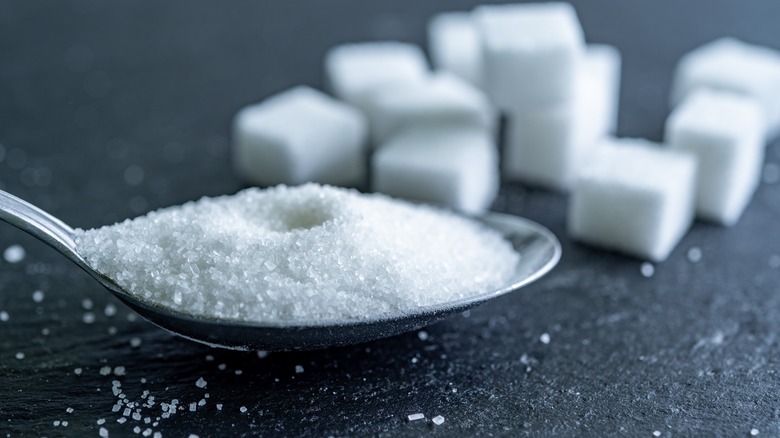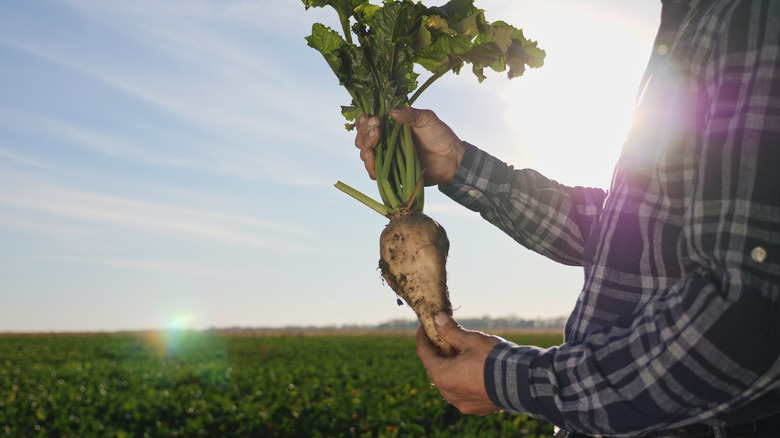The Real Reason Sugar Production Has Been More Successful Than Expected
Amid the ongoing food crisis — impacting items from olive oil to beef to bread — because of global climate change and the war in Ukraine, there is finally a bright spot. According to a report from Food Business News, the USDA has revised its estimates on the U.S.'s sugar stocks for 2021 and 2022 (the current year) and 2022-2023 (beginning in October). U.S. sugar stock grew an additional 46,000 tons in July, and yields for next year are expected to increase by 203,993 tons. This is all because of a higher than anticipated sugar beet harvest.
Before the 19th century, sugar was reserved for the rich because the process of growing, extracting, and shipping sugar made from sugarcane, which was grown in the West Indies, to Europe was prohibitively expensive, explains the University of Nebraska-Lincoln. In the middle of the 18th century, Andreas Margraff discovered that beets contained sucrose; however, the German chemist did not have a way to extract the sugar economically. About 50 years later, Margraff's student Franz Karl Achard perfected a method and is considered the founder of the industry.
However, it wasn't until Britain blocked France's trade routes to the West Indies that sugar beet production scaled enough to make the sweetener cheap for mass consumption. With the blockade in place, Napoleon encouraged French farmers to grow sugar beets to replace the imported sugarcane and built 300 factories in France to process the plant, making it affordable to all (via Smithsonian Magazine).
How much sugar comes from the sugar beet?
It took until 1850 for sugar beets to cross over from Europe and into the U.S.'s food supply. Now, The Sugar Association says that the majority of sugar made in the U.S. (54%) comes from sugar beets. Business Standard explains that not only are these plants used to make white sugar, but they also make molasses and brown sugar. AG Week says the recent sugar stock increase is partly due to additional planting in some regions of the U.S. For instance, Minnesota-based Minn-Dak growers were incentivized to plant extra acres to make up for some springtime woes.
At the start of its season, the sugar beet crop was rocked by climate pressures: Planting was late because of the cold, wet spring, severe winds uprooted the newly planted seedlings, and then hail storms took out the replanted crops. However, the industry trade publication reports that farmers are optimistic about the remainder of the growing season, which should be with minimal insect infestations and disease.

